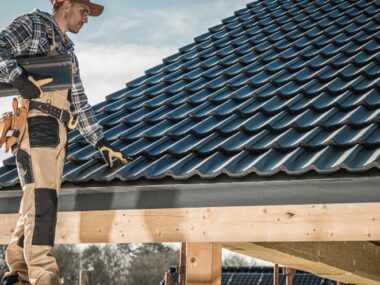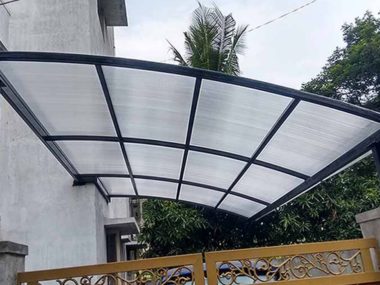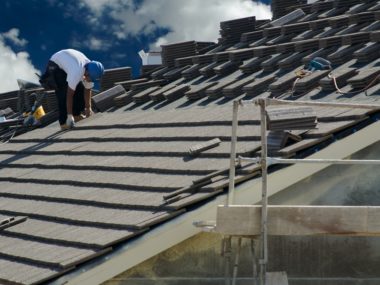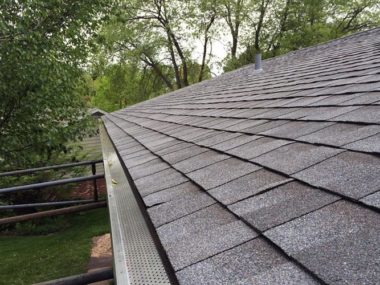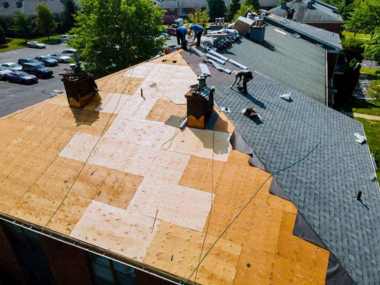Key Factors Influencing Flat Roof Repair Costs
Understanding the variables that influence flat roof repair costs is the first step toward budgeting effectively. These factors can cause significant fluctuations in the final price, making it crucial to consider each one when assessing an estimate.
The extent of the damage is arguably the most significant cost driver. A small, localized puncture will naturally cost far less to fix than widespread membrane deterioration or structural issues. We categorize repairs into minor, moderate, and major, each with its own cost implications.
The size of the roof is another direct determinant. While many repairs are quoted per job rather than per square foot, a larger roof generally implies more material, more labor, and potentially more widespread damage. Similarly, the complexity of the roof’s design plays a role. A simple, unobstructed flat roof is easier and quicker to repair than one with numerous vents, skylights, HVAC units, or parapet walls. Each of these penetrations requires intricate flashing and sealing work, and they represent potential failure points that demand meticulous attention from the repair crew to ensure a durable, watertight seal.
Accessibility to the roof also impacts labor costs. A roof on a single-story building with easy ground access will be less expensive to work on than a multi-story building requiring specialized equipment like scaffolding or cranes for material transport and debris removal.
Finally, geographic location significantly influences repair costs. Labor rates, material prices, and local regulations vary widely by region. For instance, average costs in a high cost-of-living urban center might be considerably higher than in a rural area.
For a comprehensive understanding of these cost drivers and more, consulting with a provider of Golini expert flat roof repair can offer invaluable insights into what to expect when facing a flat roof issue.
Understanding Labor and Material Expenses
When you receive an estimate for flat roof repair, it typically breaks down into two primary components: labor and materials.
Labor costs are a significant portion of any roofing project. These are calculated based on the number of hours the crew spends on your roof, multiplied by their hourly rate. Based on internet data, average hourly labor rates for roofing professionals can range from $50 to $100 per hour. This rate is influenced by the roofer’s experience, insurance costs, and local market demand, so it can vary significantly by region and the complexity of the work. Factors like the difficulty of the repair, the height of the building, and the need for specialized equipment like cranes or safety harnesses can all increase labor hours and, consequently, the total cost.
Material costs depend on the type of flat roofing material being repaired (EPDM, TPO, modified bitumen, etc.) and the quantity needed. While minor repairs might only require a small amount of patching material, extensive repairs could necessitate larger membrane sections or specialized coatings. Based on internet data, flat roof repair material costs can vary, with typical per square foot ranges from $8.50 to $15.
Beyond these, you might encounter disposal fees for old or damaged roofing materials, especially if a significant tear-off is required. Additionally, some projects may require permit costs from local authorities, which ensure the work complies with building codes and safety standards. These fees are usually a small percentage of the total project cost but are important to factor into your budget.
How Damage Severity Impacts Your Bill
The severity of your flat roof’s damage is a primary determinant of the repair cost. We typically categorize repairs into three tiers: minor, moderate, and major, each with its own average price range based on internet data.
- Minor Repairs: These are usually small, isolated issues that are caught early. Examples include a small puncture, a single loose seam, or minor flashing damage. These are often quick fixes that prevent larger problems. Based on internet data, minor flat roof repairs can cost anywhere from $300 to $1,000.
- Moderate Repairs: This tier involves more significant damage that might affect a larger area or require more specialized attention. This could include multiple leaks, widespread blistering, or sections of the membrane needing replacement due to wear and tear. Based on internet data, moderate flat roof repairs can range from $1,000 to $2,500.
- Major Repairs: These are extensive issues that often indicate widespread deterioration or structural compromise. This might involve large sections of the roof membrane needing replacement, significant water damage to the underlying decking or insulation, or severe sagging. Such repairs can sometimes approach the cost of a full replacement, making careful assessment crucial. In these situations, it may be more economical to consider a full replacement, and getting a quote from a company specializing in Apex expert roof installation is a prudent step. Based on internet data, major flat roof repairs can cost between $2,500 to $5,000 or more.
Understanding these tiers helps you anticipate the potential financial outlay and emphasizes the importance of addressing minor issues before they escalate.
Common Flat Roof Problems and Typical Repair Costs
Flat roofs, despite their durability, are susceptible to specific problems due to their low slope. Understanding these common issues and their typical repair costs can help property owners react quickly and prevent further damage. These issues can range from water-related problems to membrane deterioration and, in severe cases, structural compromise. Regular preventative maintenance is key to mitigating these risks.
Leaks, Ponding, and Water Damage
Ponding water is one of the most prevalent issues for flat roofs. This occurs when water collects on the roof surface and doesn’t drain within 48 hours after rainfall. Persistent ponding can accelerate the deterioration of roofing materials, leading to leaks and potential structural damage. The causes can range from clogged drains and debris accumulation to improper roof slope or structural sagging.
Leak detection can be challenging on a flat roof, as water can travel a significant distance horizontally before manifesting as a visible leak inside the building. Professional leak detection often involves specialized equipment and expertise to pinpoint the exact source.
Repairs for water-related issues often involve addressing the drainage system and sealing vulnerable points:
- Flashing repair: Flashing, which seals the edges and penetrations of the roof, is a common point of failure. Damaged flashing allows water to seep underneath the membrane. Based on internet data, flashing repair typically costs between $200 and $750.
- Drain repair: Clogged or damaged drains can lead to ponding water. Repairs might involve clearing blockages, repairing pipes, or even replacing drain components. Based on internet data, drain repair costs usually range from $75 to $500.
- Gutter guard installation: To prevent debris from clogging drains and gutters, considering expert roofing gutter guards Cambridge can be a wise preventative measure. This helps maintain efficient water flow and reduces the risk of ponding and subsequent leaks.
Addressing these issues promptly is essential to prevent extensive water damage to your property’s roof structure and interior.
Membrane Issues: Cracks, Blisters, and Alligatoring
The membrane of a flat roof is its primary waterproof barrier, but it can suffer various forms of deterioration over time due to weather exposure, UV radiation, and temperature fluctuations.
- Blistering: This occurs when air or moisture gets trapped beneath the roofing membrane, causing bubbles or raised areas. These blisters are vulnerable to punctures and can eventually lead to leaks. Repair typically involves cutting open the blister, allowing it to dry, and then patching or resealing the area. Based on internet data, repairing blistering can cost between $250 and $1,000.
- Cracking: As roofing materials age and are exposed to thermal expansion and contraction, they can develop cracks. These cracks compromise the waterproof integrity of the membrane. Repair involves cleaning the area and applying a patch or sealant. Based on internet data, crack repair can range from $150 to $1,500, depending on the extent and number of cracks.
- Alligatoring: This term describes the appearance of a flat roof membrane that resembles alligator skin, characterized by a pattern of fine cracks. It’s typically a sign of aging and UV degradation, indicating that the membrane is becoming brittle and losing its elasticity. While patching can offer temporary relief, widespread alligatoring often signals that the roof is nearing the end of its lifespan and might require more extensive resurfacing or replacement. Based on internet data, addressing alligatoring can cost between $350 and $1,000.
- Membrane patching: For isolated damage like punctures or small tears, patching is a common and cost-effective solution. This involves cleaning the damaged area and applying a compatible patch material with adhesive. Based on internet data, membrane patching costs typically range from $300 to $1,750, depending on the size and complexity of the patch.
Regular inspections can help identify these membrane issues early, allowing for timely repairs that can extend the life of your flat roof and prevent more costly water damage.
Cost Breakdown by Flat Roof Material
The type of material used for your flat roof significantly impacts its repair cost. Different materials have varying properties, repair methods, and associated expenses. Here’s a general overview of common flat roofing materials and their typical repair costs and lifespans, based on internet data:
| Material Type | Typical Repair Cost (per sq. ft.) | Average Lifespan (Years) | Notes

